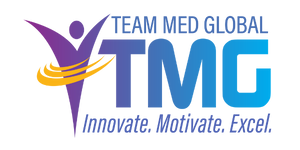 During the COVID pandemic, there was a seismic shift in remote work attitudes and practices. The Pew Research Center found that, pre-pandemic, 23 percent of those surveyed who held jobs that could be performed remotely said that they telecommuted frequently. At the height of the pandemic, that number skyrocketed to 71 percent. Now that COVID has gone from pandemic to endemic, 59 percent report either working exclusively from home or working a hybrid on-site/off-site schedule.
During the COVID pandemic, there was a seismic shift in remote work attitudes and practices. The Pew Research Center found that, pre-pandemic, 23 percent of those surveyed who held jobs that could be performed remotely said that they telecommuted frequently. At the height of the pandemic, that number skyrocketed to 71 percent. Now that COVID has gone from pandemic to endemic, 59 percent report either working exclusively from home or working a hybrid on-site/off-site schedule.
Two out of three of those who prefer remote work say that doing so makes work-life balance easier, while four in ten say it has improved their productivity and ability to meet deadlines. Other reasons why some find remote work appealing include childcare responsibilities and having moved away from the location of the workplace. For those who currently work remotely, eight in ten want to continue to do so. Still, six in ten remote workers report feeling less connected to their coworkers.
On the flip side of the coin, 22 percent of those whose work can be done remotely don’t actually telecommute. Of those, 64 percent say that their employer prohibits them from telecommuting, but for the rest, other factors come into play. They prefer working in the office, feel more productive when they’re at their workplace, don’t have the resources to work at home, feel as though their potential for career advancement will be hindered if they telecommute, or feel pressure from their supervisor or coworkers to work at the office.
Overcoming Challenges for MSPs in Remote or Hybrid Environments
Today’s telecommuting landscape means that some or all MSPs may be working remotely. This presents a number of challenges and a number of opportunities to overcome those challenges.
Team Meetings
Effective hybrid team meetings – during which some MSPs are on-site and others are telecommuting – are both an art and a science. We’ve become intimately familiar with Zoom, Microsoft Teams, Webex, and Google Meet over the past two years, but technology is just the beginning. Imposing a traditional meeting structure on a hybrid meeting often leaves remote MSPs as observers rather than participants.
The trick to effective hybrid meetings is to communicate before and after the meeting. Use the team’s message board to post meeting objectives, responsibilities, and supporting materials. During meetings, regularly engage remote participants. Utilize shared virtual whiteboards for brainstorming. Finally, follow up with written action items and next steps.
Delegation
The MIT Sloan Management Review points out that the distance inherent in virtual teams has three dimensions:
- Physical distance – the geographic distance between the office and the remote worker;
- Operational distance – the organizational processes that have the potential to support or undermine team collaboration; and
- Affinity distance – the emotional and mental connections between and among team members that promote a sense of shared purpose.
According to the authors, delegation is a tool that can lessen all three dimensions of distance by building trust and commitment within remote teams. The keys to effective delegation are:
- Determining a limited number of tasks you need to handle and delegating the rest;
- Understanding that there are different approaches to accomplishing a goal and empowering team members to implement their solutions;
- Setting clear expectations regarding processes, milestones, and goals;
- Creating systems for frequent and clear communication to support team members and approve milestones; and
- Leveraging technology – like Trello, Slack, Asana, or Basecamp – for task assignments and project management.
Delegation is a skill that takes practice. While it’s tempting to want to do everything yourself, mastering delegation is key to ensuring remote team cohesiveness.
Monitoring Performance
A hybrid work environment can easily fuel concerns – and sometimes suspicions – about performance. Is an MSP working all the remote hours they’ve logged or are they fudging their timesheets? Some employers have turned to monitoring software and always-on webcams to check on employee activity, making some workers feel as though they’re living in a Big Brother surveillance state and undermining workplace culture.
Experts suggest that scooping up endless data about employee activity is counterproductive. Instead, they advocate focusing on developing protocols for the most important tasks related to productivity. By zeroing in on outcomes – such as how long it takes an MSP to credential one provider – the employer can empower employees while also achieving productivity benchmarks. Regardless of the monitoring mechanism, employees should have a clear understanding of its method and purpose, as well as how the information gathered will be used.
Remote and hybrid work have changed the way MSPs complete tasks and manage teams. Challenges surface in both on-site and remote work environments, but by implementing tried-and-true approaches, MSPs up and down the organizational ladder can thrive.
If you’re interested in working remotely on a part-time or full-time basis in the medical staff services field, complete TMG’s ProVISIONary Staffing application here: https://www.teammedglobal.com/provisionary-staffing/
If you’re ready to hire someone to work remotely, ProVISIONary Staffing can help: https://www.teammedglobal.com/tmg-services/#nextstep

